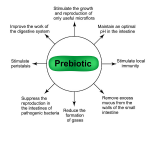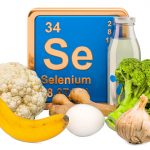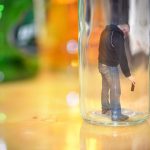Warning of Equating COVID-19 with HAPE
Node Smith, ND
Early reports of COVID-19 symptoms and the compelling need to quickly identify treatment options and curb the growing number of critically ill patients have led to erroneous and potentially dangerous comparisons between COVID-19 and other respiratory diseases like high altitude pulmonary edema, or HAPE.
Erroneous and potentially dangerous comparisons between COVID-19 and other respiratory diseases like HAPE
In “COVID-19 Lung Injury and High Altitude Pulmonary Edema: A False Equation with Dangerous Implications,” the authors urge clinicians to rely on scientific evidence to guide treatment. The paper was posted early online in the Annals of the American Thoracic Society.
Some similarities between COVID-19 and HAPE exist as there are similarities between COVID-19 and other respiratory illnesses
There are some similarities between COVID-19 and HAPE as there are similarities between COVID-19 and other respiratory illnesses that cause respiratory failure: very low oxygen levels in the blood, significant difficulty breathing, the degree to which there is stiffness in the lungs, and abnormal findings on chest CT scans. However, there are fundamental differences between COVID-19 and HAPE.
How HAPE develops
“HAPE develops when people ascend to high altitude. The low oxygen levels in the atmosphere cause low oxygen levels in the air sacs of the lungs,” said Andrew Luks, MD, professor of medicine in the Division of Pulmonary, Critical Care and Sleep Medicine at Harborview Medical Center and the University of Washington. “In all people, this leads the blood vessels in the lungs to constrict and raises the blood pressure in the lungs (pulmonary artery pressure). In people who develop HAPE, this response is excessive.
There is far too much vasoconstriction and far too great a rise in pulmonary artery pressure, all of which lead fluid to leak out of the blood vessels into the lung tissue, but this occurs with no inflammation.”
“In lung injury due to COVID-19, the virus attacks the cells that make up the air sacs of the lungs. This leads to a big inflammatory response that damages the air sacs (alveoli), leading fluid to leak out of the blood vessels even under much lower pressures, causes the alveoli to collapse, interferes with gas exchange and makes the lungs stiffer and harder to expand than normal. “
Fundamental differences necessitate different treatment approaches
These fundamental differences necessitate different treatment approaches. While treatment with oxygen can resolve HAPE symptoms, oxygen alone is ineffective for the lung injury associated with COVID-19. Nifedpine and acetazolamide, two medications used to treat altitude sickness, can have dangerous consequences in COVID-19 patients.
“If given to a patient with lung injury due to COVID-19, it [nifedpine] has the potential to actually worsen oxygen levels in the blood and to lower systemic or whole body blood pressure,” said Dr. Luks.
Treating with acetazolamide can cause a host of problems, among them “fatigue of the diaphragm, causing the blood to become more acidic, and at high enough concentrations in the blood, impairing the transport and elimination of carbon dioxide, all of which will make patients even more short of breath.”
COVID-19 has affected how the medical community shares information
COVID-19 has affected how the medical community shares information and what the community is learning about the disease can change quickly. Clinicians and families are looking for data to help care for patients. Dr. Luks and his co-authors warn that without careful scrutiny, misinformation can quickly spread. Now more than ever, it is critical that clinicians rely on the data accumulated over time and scientific evidence related to treating acute lung injury.
1. Andrew M Luks, Erik R Swenson. COVID-19 Lung Injury and High Altitude Pulmonary Edema: A False Equation with Dangerous Implications. Annals of the American Thoracic Society, 2020; DOI: 10.1513/AnnalsATS.202004-327FR

Node Smith, ND, is a naturopathic physician in Humboldt, Saskatchewan and associate editor and continuing education director for NDNR. His mission is serving relationships that support the process of transformation, and that ultimately lead to healthier people, businesses and communities. His primary therapeutic tools include counselling, homeopathy, diet and the use of cold water combined with exercise. Node considers health to be a reflection of the relationships a person or a business has with themselves, with God and with those around them. In order to cure disease and to heal, these relationships must be specifically considered. Node has worked intimately with many groups and organizations within the naturopathic profession, and helped found the non-profit, Association for Naturopathic Revitalization (ANR), which works to promote and facilitate experiential education in vitalism.









